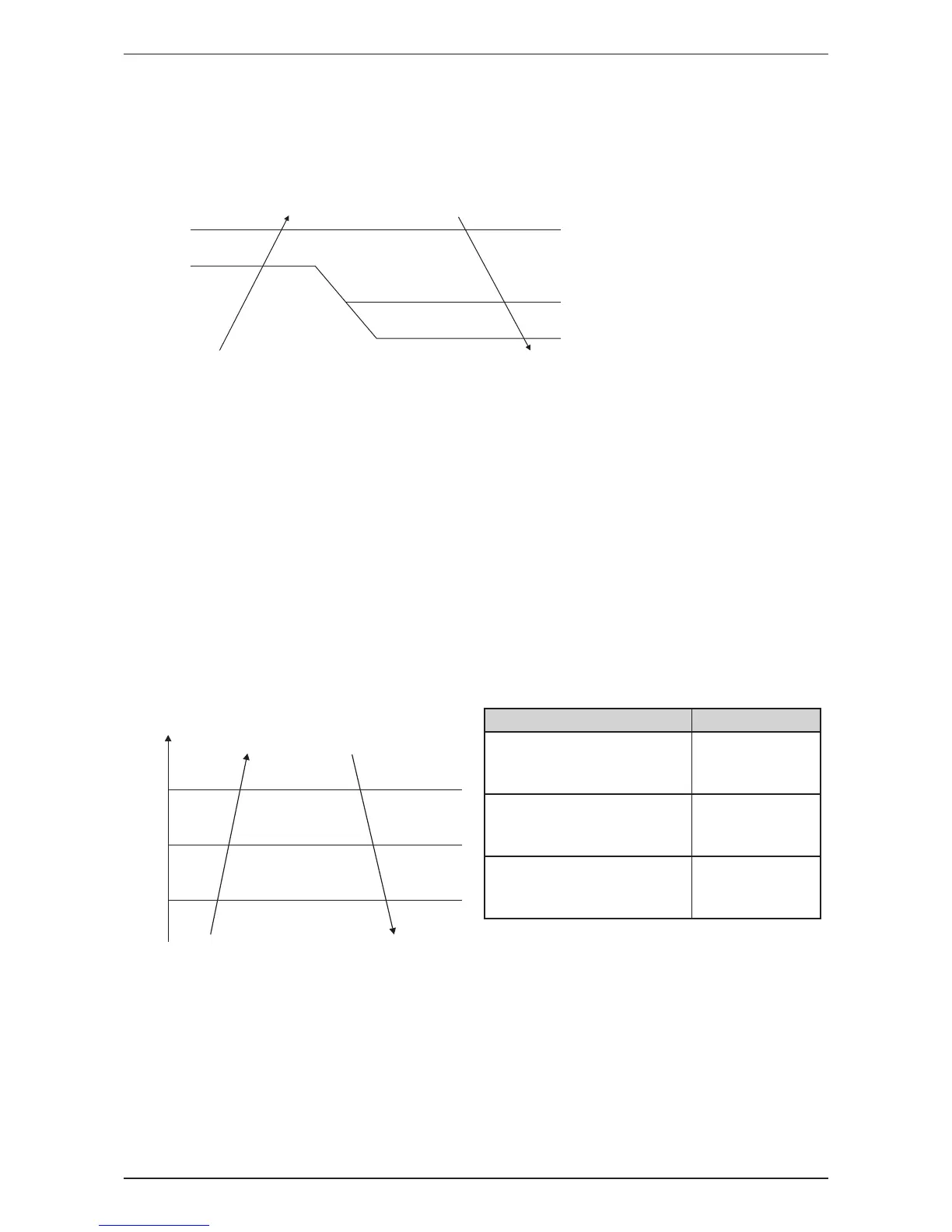28
2.22 Discharge Pipe Temperature Control
Used as a measure of the compressor’s internal temperature.
Compressor frequency is control to keep this temperature from going up further when it rises above a certain
level.
Discharge temperature
Stop zone
Drop zone
Frequency
keep zone
Reset zone
110°C / 230°F
102°C / 215.6°F
99°C / 210.2°F
90°C / 194°F
Ifcompressordischargetemperature>102°C(215.6°F)forthersttime,thiscontrolstartsandsetsthe
current frequency as upper limit. At the same time, running frequency starts to reduce by 1 step and so on,
untiltemperaturefallsbetween99°C(210.2°F)and90°C(194°F)atthekeepzone.
Thisprotectionisactivatedwhenthecompressordischargetemperature>110°C(230°F).Thecompressor
will stop and considered trip.
Ifthecompressordischargetemperature<90°C(194°F),thecompressorfrequencywillberesetbasedon
the outdoor ambient, set and room temperature.
Moredetailinformation(i.e.“basedonambient”givethetemperatures)
2.23 Overall Current Control
To monitor the overall current and to restrict the compressor upper limit rotation in order to prevent circuit
breakers from exceeding the rated capacity.
Detected during compressor running.
Current (A)
L1
L2
L3
Stop zone
Reset zone
Frequency
reduce zone
Frequency
remain zone
Model L1
RK(X)B09AX
RK(X)N09AX
9.5A
RK(X)B012AX
RK(X)N012AX
10.0A
RK(X)B18/24AX
RK(X)N18/24AX
16.0A
When the input current for running compressor exceeds L2, the running frequency will be reduced by 1 step.
If the current still exceeds L2, frequency will be reduced by another step until total current falls between L2
and L3.
This protection cuts in when the input current exceeds L1 for 2 seconds. Compressor will stop and it is
considered total current overload.
If input current < L3, the compressor frequency is reset based on the outdoor ambient, set and room
temperature.

